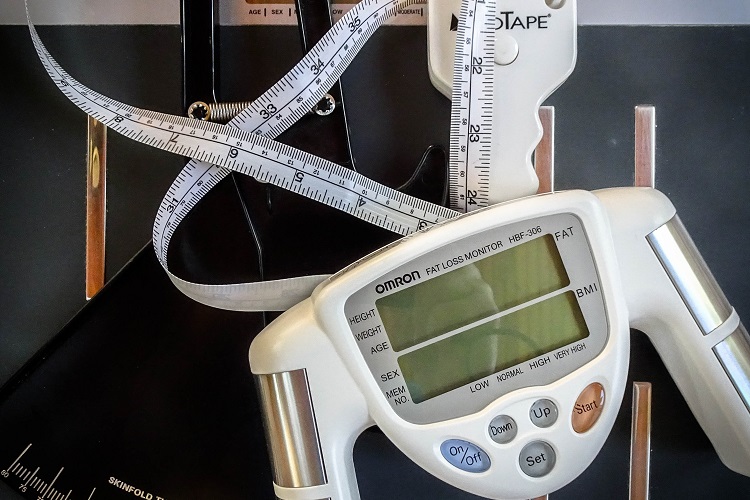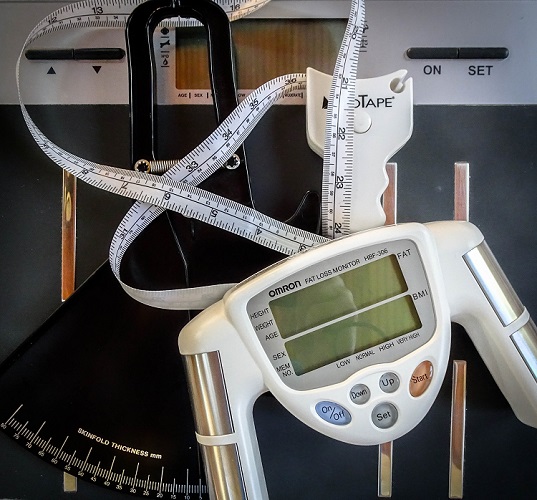

By Michael Krueger
There was a time in my training career that I felt that it was very important to run new clients through a battery of tests. This was done on the pretext of evaluating their current condition, and then that data was to be used to design a program to address issues that were found. Then, of course, I would retest at regular intervals. I was convinced, not to mention trained, to believe this was the only way to determine their level of fitness and to judge the effectiveness of their program.
After years of experience and coming to better understand the personalities, goals, and motivations of my clients, my attitude toward tests evolved.
Time passes, things change ….
Standard Tests
There are a few tests that virtually all trainers are taught to do with new clients. It starts with an interview and a lot of talk. We ask about their work and family, hobbies and interests, hopes and dreams, expectations, level of commitment; these are all good things to know. Not only are they important for program design, but it plays into how to deal with them regarding the tests and particularly the re-tests (more on this coming up).
First up is body composition. So, put them on the scale, pull out the calipers and tape measure, and there’s our initial data. I would give them the results, stressing that this is just the starting point and that they will see lots of changes as time goes by.
Then, in eight weeks, we would do it all again. Despite what the infomercials tell you, the results are rarely dramatic. In fact, very often the numbers are worse than when they started. But, there they sit, all excited to hear the good news. After all these weeks of hard work, they know they are going to be great! They feel better, feel stronger, look better, and are looking forward to seeing the hard data to confirm it all. So, what do I tell them when it’s less than they expected … or even worse than their initial tests?
I could explain all the possible reasons that the composition numbers are off, but there are so many possible causes. Metabolic changes in a new exerciser can make some very weird stuff go on. Body fat seems to shift from one place to another. They are drinking more water and eating more fiber, so their raw weight goes up. Once in a while, they will add some muscle, which is good, but that can also add inches to their measurements.
Strength tests at the beginning of training are really problematic. It’s very true that in an untrained individual, just learning and getting acquainted with the lifting technique will dramatically increase the amount of weight lifted. So, despite the fact that they hadn’t gained any muscle, they are a lot “stronger” just because they are more efficient in using the muscle they have in performing the given task.
I could say that the numbers don’t matter (of course, that begs the question as to why we measured them to begin with). I could point out how much better all aspects of their life are. I could say that they are laying a great foundation for future gains. I could say that it takes years to make lasting changes. I could just dump the results on them and say nothing. I could say that in the early stages of training, perception outweighs reality … or maybe I could just flap my arms and fly to the moon.
This is where tact comes into play. The one thing that I learned early on is to never give “bad” results to happy clients. So, to answer the question, “What do I say?” well, I lie. OK, I don’t lie about everything; I never fudge on their weight because that is indisputable. But the body fat calculations and girth measurements are always fair game. To be honest, caliper measurements are often not consistent, and neither are body girth measurements–particularly if a different person had done the first tests as often happened when I worked at a studio with other trainers.
I never felt that I was being dishonest (though others might disagree); I was being considerate and realistic. Why tell someone that they didn’t do well when they obviously did, even if the (possibly inaccurate) numbers didn’t confirm it? This is when my taste for testing body composition waned.
Now, a little something about the fitness industry. When I was working for a studio, what we were taught to do when the numbers didn’t improve was to show them the results (shaking my head and looking glum and disappointed) and blame them for their poor showing, citing a lack of effort and commitment. We would question their food log and chide them for not working hard enough, pointing out every missed session. We would tell them they need to come in and train at least one if not two times more per week (thereby increasing company profits). This, I felt, was dishonest.
So, body composition testing is something I will do now only if a client requests it; same with “before and after” photos.
Now, strength and cardio testing is a little different because they are objective tests. The weights and reps go up, the speed or distance improves, and the numbers show that you’re getting better; if they don’t, you’re not.
Despite the objective simplicity and straightforwardness of the tests and results, I don’t do them anymore either. I find it’s easy to see improvement just by analyzing the day-to-day results of their workouts.
True, one rep max testing is asking for injury, particularly if you don’t train for one rep strength. If you are going to use a multi-rep formula to project a maximum, why not just record the multi-rep max and forget about the projection? If you are training sets of eight, you should know exactly what your eight-rep max is without saying, “Today, we test for your eight-rep max.” It seems silly to me.
Cardio testing is equally problematic. The most popular low-tech test is the three-minute step test. It’s so simple as to be almost useless unless the person being tested is in really bad shape (I have seen only one person who couldn’t complete it).
A true VO2 max test is a great tool to assess cardiovascular efficiency (it’s basically a stress test), but it requires specialized equipment and trained personnel to administer and interpret the results. There are sports medicine clinics that give the tests to competitive athletes, and the tests can be a very useful tool in program design and setting optimal workload parameters. Whether this data would even be useful to the average trainee is highly debatable.
A predictive VO2 max test can be done on a treadmill, a bike, or a rower. I’ve done this on the Concept 2, and when done correctly it is the most painful thing imaginable. It requires that you work as hard as you can (no pacing yourself) for a specific distance and/or time; then through the use of a formula, your VO2 max can be estimated.
I’ve suggested doing a predictive test to a client or two (those who already work their cardio training hard), and I have never gotten an affirmative reply once they hear what it entails. Most people simply don’t want to, don’t know how to, or probably shouldn’t push themselves that hard. Fortunately, once again it really isn’t necessary to do to set training goals or to see whether you are improving.
No More Tests
The bottom line here is that I don’t test my clients anymore unless they ask for it. We start slowly and go over their workouts to assess their progress toward their strength goals. If they are training cardio, we go over their training log and check for progress or problems. If they are trying to lose weight, they weigh themselves regularly (and we go over their food log IF they are keeping one) and we discuss their diet. They can tell if their clothes fit looser or tighter, and they can look in a mirror to see if they like what they see.
The one thing we can’t test for is self-esteem or feelings of accomplishment and well-being. These things are self-assessment items and are by far the most important result of training and predictor of long term success.
In my estimation, a happy, self-assured, and motivated client is a successful client …
no matter what the tests might say.
Michael Krueger is an NSCA-certified personal trainer. He got his start in fitness training while serving in the United States Coast Guard. He works with firefighters and others in and around Madison, Wisconsin. He is available to fire departments, civic organizations, and athletic teams for training, consulting, and speaking engagements. He has published numerous articles on fitness, health, and the mind-body connection and was a featured speaker at the IAFC’s FRI 2009 Health Day in Dallas, Texas. E-mail him at MKPTLLC@gmail.


